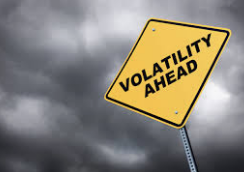Goldman Sachs: The article below is from our BRIEFINGS newsletter of 31 March 2020
More than two months after imposing quarantines to battle the COVID-19 epidemic, China is on the economic road to recovery. Shao Ping Guan, head of the China Equity team and lead portfolio manager of Goldman Sachs Asset Management’s China Equity strategies, shared his thoughts on the country’s recovery and the resilience of its equity markets.
“Shao Ping, you’ve been investing in China for two decades and have been in Hong Kong throughout the crisis. What metrics are most material to informing your views on the resumption of China’s economic recovery?“
Shao Ping Guan: Many of the key indicators we look at—such as the return of migrant workers, logistics activity and the rate of electricity and coal generation—indicate that China’s manufacturing sector is operating at close to 80% of its normal capacity. In other words, industrial production has more or less normalized. However, the country’s urban traffic positions—which reflect the status of urban, commercial and consumer activities—are only operating at about 65% of normal levels. That lag is not entirely unexpected given social distancing measures and the gradual removal of lockdown measures. For example, restaurants only started to open in the last two weeks while schools are expected to open by the end of March and early April.
Anecdotally, however, manufacturers have told us that while they were initially worried about whether they would be able to ramp up production to meet demand, they’re now worried about a drop in export orders, especially from Europe, in the second half of the year. And some of the larger, coastal cities are worried about a second wave of imported virus cases. That’s why we believe April will be a critical month for China. If the country gets through the month without major hiccups, calamities and cases, then one might optimistically expect that China could reach full domestic consumption by early May.
“As China cautiously returns to work, what measures are in place to help the transition?“
Shao Ping Guan: In recent weeks, the Chinese government implemented a range of measures to support the economy and the financial system. Key fiscal policies include tax cuts for small businesses and new infrastructure projects to boost growth. Meanwhile, China’s central bank injected 1.2 trillion yuan into the financial system last month and lowered benchmark lending rates so banks can lend more to businesses. In addition, we expect changes in the approach towards structural issues, such as slowing the pace of de-leveraging, market-oriented reforms and implementation of environmental regulations. We believe efforts to further open the China A-shares market to foreign investors are on track and may even be accelerated.
“To follow up, China’s A-shares—or its local equities—have recently outperformed global equity markets. What does that say about the resilience of the market or is there a lag?”
Shao Ping Guan: Local Chinese equity markets are dominated by individual investors, millions of whom appear to be concluding that authorities are getting the virus under control. New local cases in China have largely declined while the markets are benefiting from improved liquidity. Prior to the virus outbreak, Chinese policymakers had already been easing and encouraging local governments to issue more bonds for infrastructure investment. And following the outbreak, the government also made liquidity abundant for capital markets to help cushion the impact of the outbreak.
“What’s your outlook for China’s growth?”
Shao Ping Guan: While China’s domestic economy is stabilizing and normalizing, the external environment remains highly uncertain, given the negative implications for export demand and tourism. That said, we believe that China will not be a drag on global economic growth in second quarter, but rather a stabilizing force in the global economy, as domestic economic and corporate fundamentals sequentially improve.
“How are you approaching the investment landscape?”
Shao Ping Guan: Over the long term, we believe the three key investment opportunities in Chinese stocks remain structurally intact—albeit with new risks and opportunities: the consolidation of “old economy” sectors and the emergence of competitive national brands; the fusion of online-offline business models improving service sector productivity; and improvements in technology via innovation and market-oriented competition.









